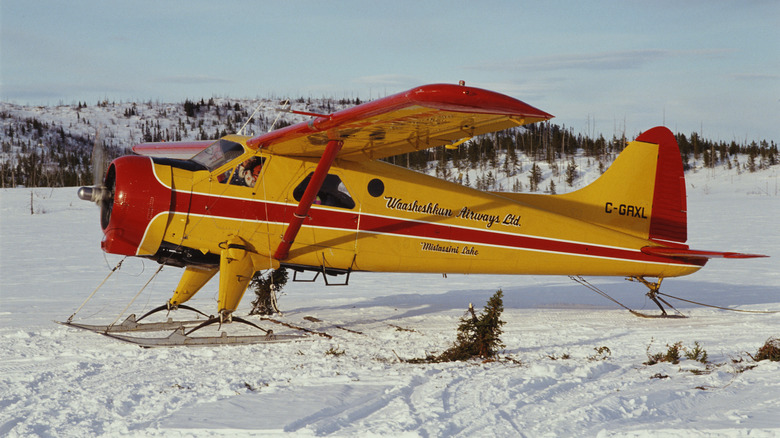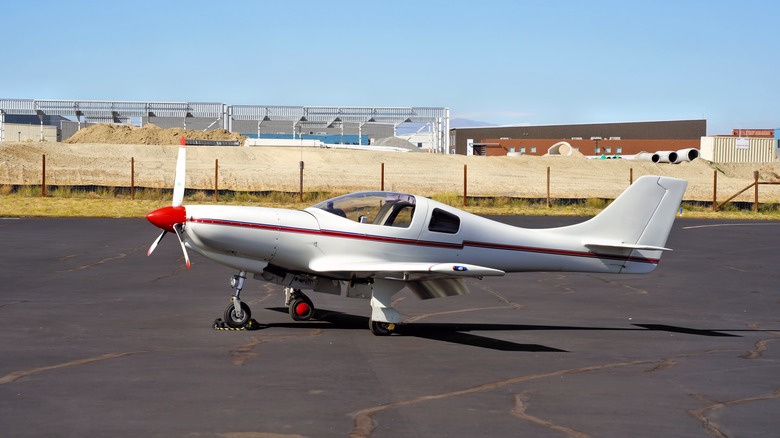What Are Bush Planes, And How Are They Different From Regular Prop Planes?
Throughout much of history, humanity has desired to get its feet off the ground. High off the ground. Thus, around the start of the 20th century, great strides were made in aviation. In short order, aircraft became an integral part of everyday life. Some models have become the most iconic airplanes in aviation history, while others haven't reached such high levels of mainstream recognition. One variety that tends to be overlooked by the general public, at least compared to commercial jets and military aircraft, is the bush plane.
Bush planes are commonly single-engine aircraft — oftentimes modified preexisting planes — that are equipped to safely traverse and land in remote areas. This is where the name "bush plane" comes from. They're not so much meant for extensive flights, but rather brief ones in extreme climates. They're also capable of keeping traction on uneven terrain when landing. Frequent uses include cargo deliveries, aerial surveying, and commercial flights to more isolated regions, making them some of the most versatile aircraft in the skies.
It's easy to consider bush planes just another type of propeller, or single-engine, airplane. In truth, they're a bit different from most prop planes in multiple ways.
Bush planes are built differently than standard prop planes
When you think of an airplane, it's typical for a propeller plane — not to be confused with the significantly larger and more powerful Turboprop plane — to spring to mind immediately. As the name implies, these planes feature a large propeller in the front, powered by an internal engine that lifts the body off the ground. These aircraft are typically found at smaller airports and are best used for short to mid-range trips. Like bush planes, most are nowhere near the largest planes in the world, having only limited carrying capacity.
Based on silhouette alone, most propeller planes look like bush planes. However, upon closer inspection, it's clear that the average bush plane isn't just another prop plane. Since they're intended for rougher, isolated areas, bush planes are enhanced in various ways to withstand these conditions. Their landing gear is sturdier, and they can put on skis, thick tires, and floats to accommodate unusual landing and takeoff areas. Bush planes generally are more durable, too. Areas like the wings and fuselage are reinforced to keep them in usable shape in potentially plane-damaging areas.
At the end of the day, prop and bush planes both have their strengths and ideal uses. Prop planes remain widely used, with some standing out as the most popular single-engine planes, while bush planes are essential for moving people and supplies to rugged and remote regions.

